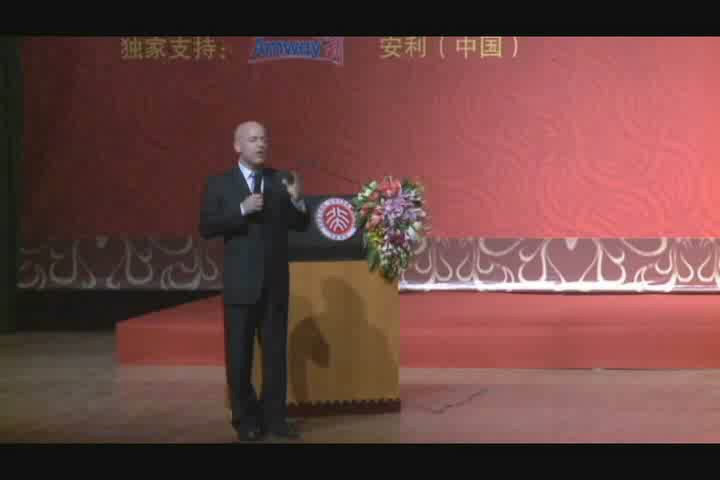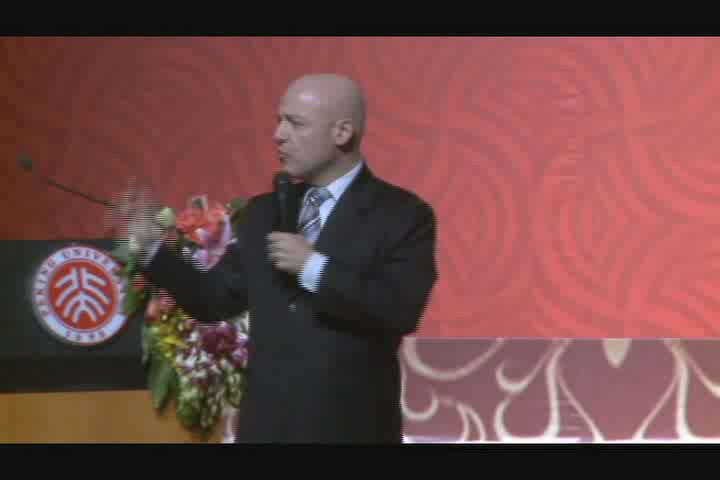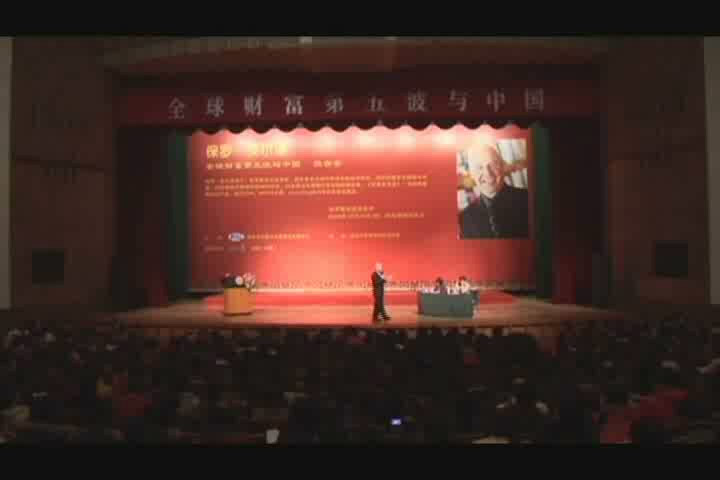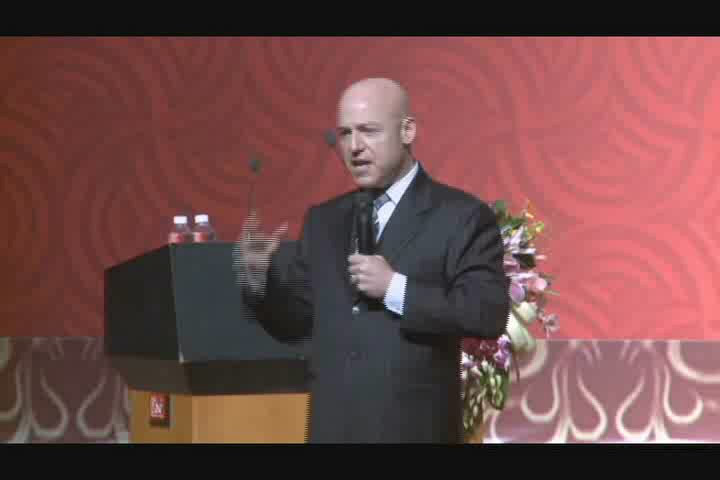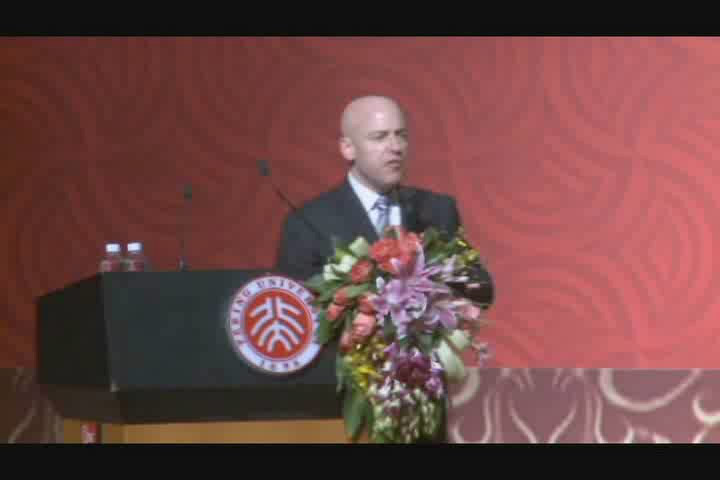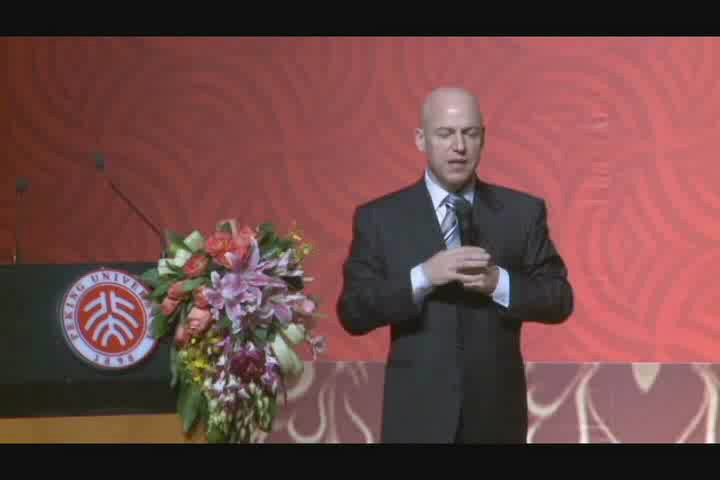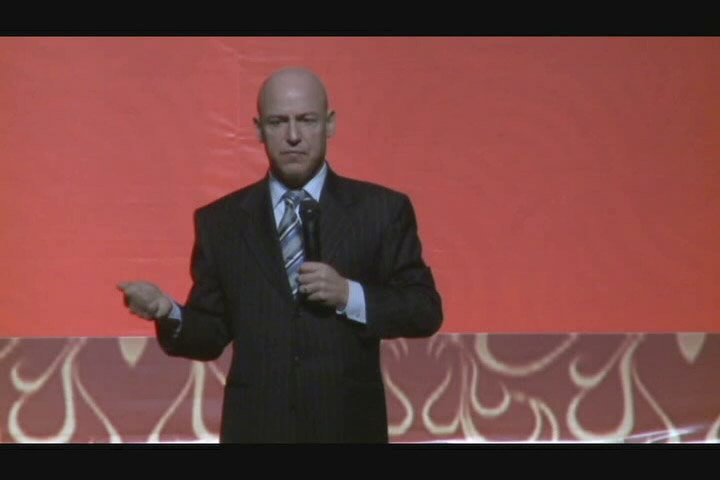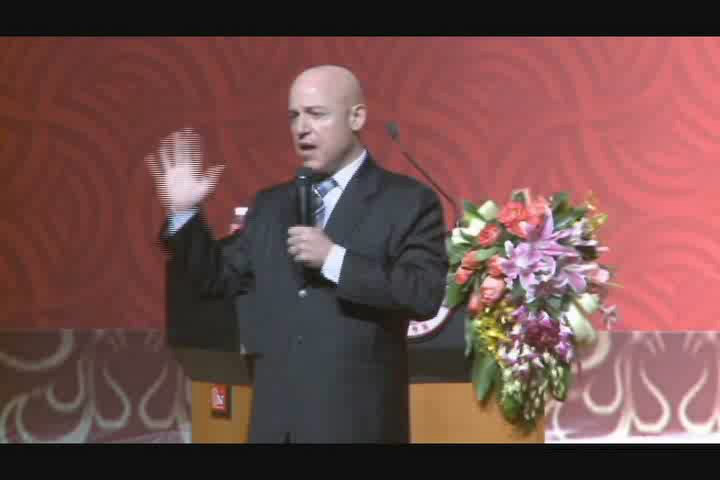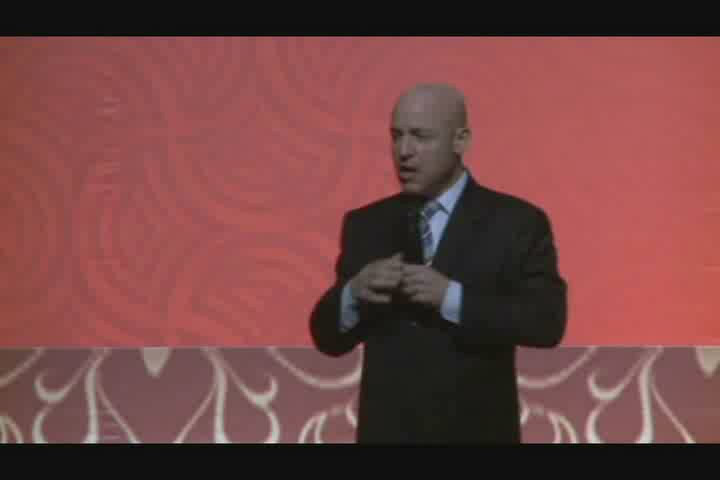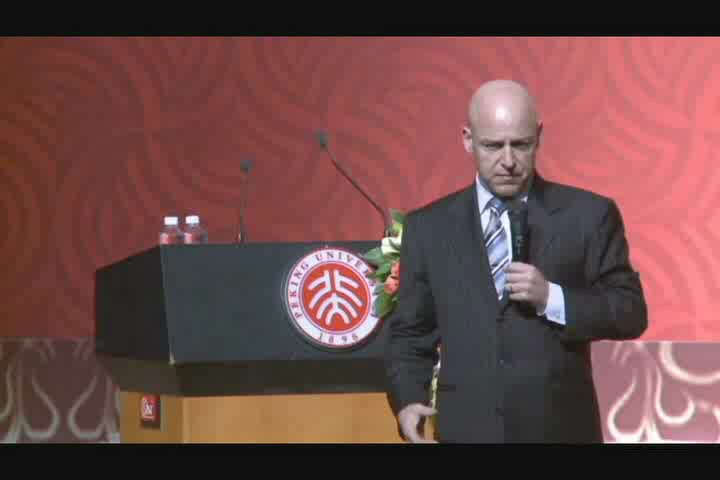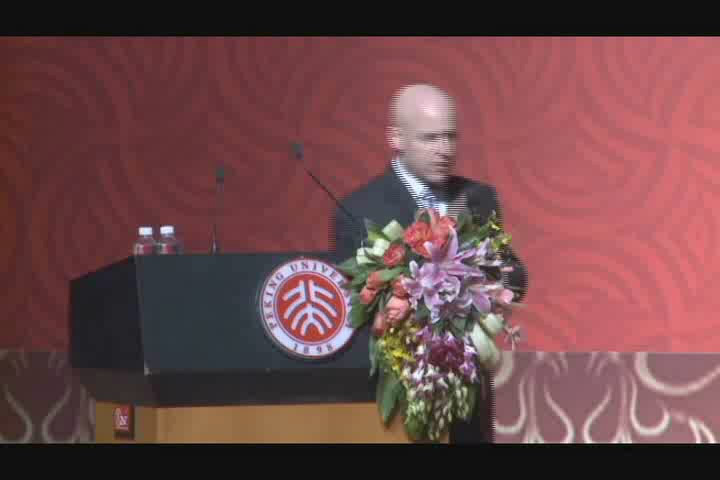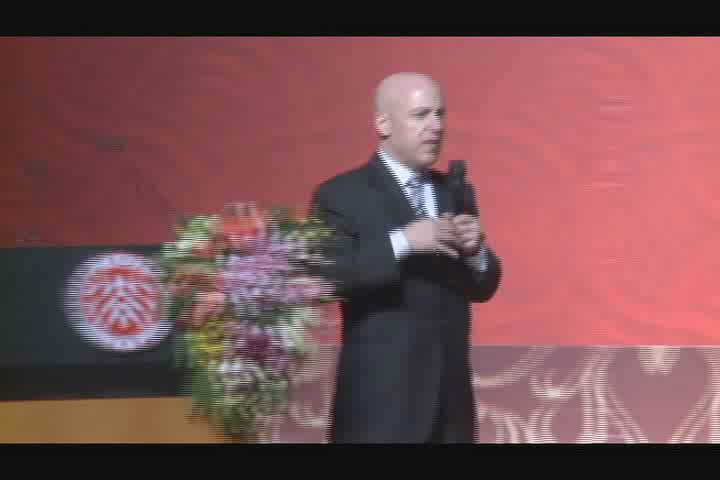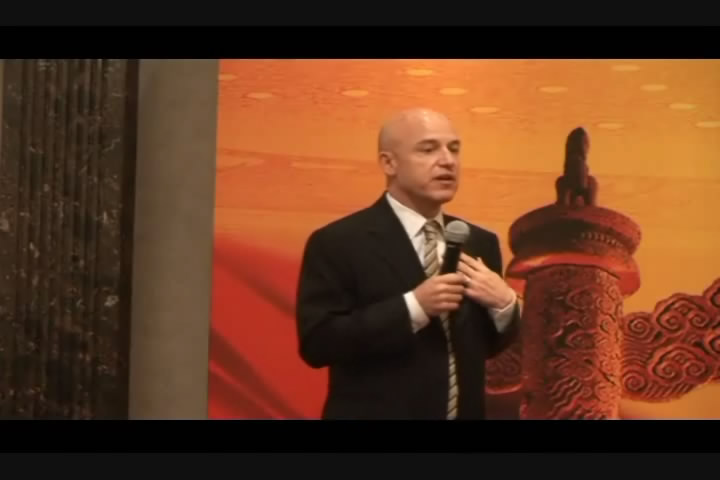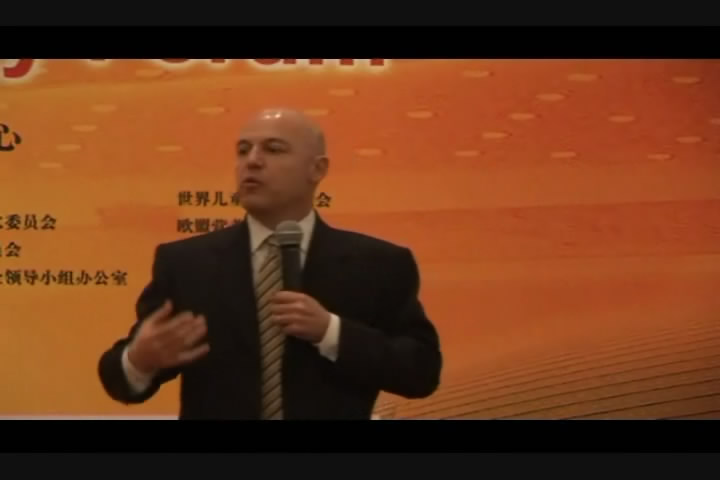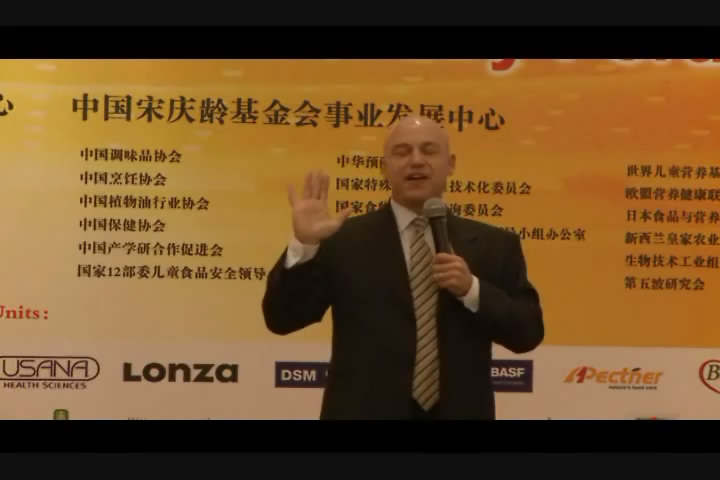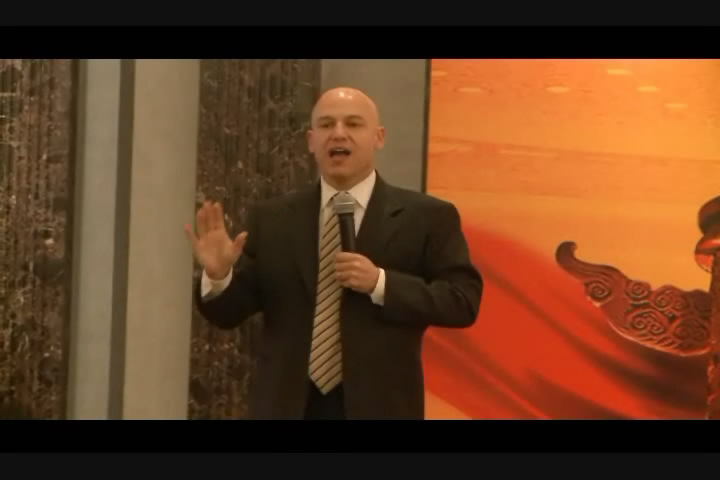
保罗.皮尔泽演讲
有意邀请皮尔泽教授演讲或者进行咨询研讨会者请联系我们
中国的崛起:(1)
中国的崛起:(2)
《点石成金》和邓小平
中国成为第一大消费体的意义
中国GDP的增长
中国经济的第一大转变
马云和阿里巴巴
营销的两个分类
中国经济的第二大转变
导致第二种转变的第一个原因
导致第二种转变的第二个原因
导致第二种转变的第三个原因
中国市场的三大特点
中国的下一个万亿美元产业
保健业在中国市场充满潜力
中国的崛起:(2)
《点石成金》和邓小平
中国成为第一大消费体的意义
中国GDP的增长
中国经济的第一大转变
马云和阿里巴巴
营销的两个分类
中国经济的第二大转变
导致第二种转变的第一个原因
导致第二种转变的第二个原因
导致第二种转变的第三个原因
中国市场的三大特点
中国的下一个万亿美元产业
保健业在中国市场充满潜力
保罗.皮尔泽 南京奥体中心演讲:2014年11月16号
-
中国的崛起: (1)
今天,全球的目光都聚焦在中国。一个世纪以来,中国在减少贫困人口上所取得的成就超过全世界所有其他国家的总和。
China’s Rise : (1)
The eyes of the world are now on China. China has pulled more people out of poverty in the last century than the rest of the world combined. -
中国的崛起: (2)
另一方面,中国现在拥有世界上最大的消费群体:目前三亿以上的中国人民拥有每人每年超过一万美元的消费能力。中国主席习近平还承诺:将在八年内,再让超过两亿中国人拥有这个每年一万美元的消费能力。
China’s Rise : (2)
China now has the world’s largest block of consumers: over three hundred million Chinese households have disposable income more than ten thousand dollars per year. On top of this, President Xi has pledged to bring more than two hundred million people from poor parts of China into middle–upper class in eight years. -
《点石成金》和邓小平
皮尔泽教授介绍他的第一本著作《点石成金》及其中重要理论, 这个理论和邓小平主席提出的:“不管是黑猫白猫,能抓住耗子的就是好猫”的理论不谋而合。
Unlimited Wealth and Deng Xiaoping
Professor Pilzer introduces his book Unlimited Wealth and quotes former Chinese leader Deng Xiaoping. -
中国成为第一大消费体的意义
皮尔泽教授用二战后的美国举例说明现在中国成为第一大消费体的意义。
What It Means for China to Become the Largest Market Economy
Professor Pilzer uses the example of USA in post-World War II era to explain what it means for China to become the largest market economy. -
中国GDP的增长
中国在过去六年内GDP增长一倍,为世界上发展速度最快的国家。而美国GDP在同一时间内仅增长了17%。
China’s GDP Growth
China’s GDP has doubled in the past six years while the US’ has gained seventeen percent in the same period. -
中国经济的第一大转变
结合美国的经历和中国目前的发展,从生产业到营销业的转变是个极为明显的现象。其根本原因在于生产成本一再下降从而使营销成本相对的持续上升。因此, 大量财富不再从降低生产成本中取得而是从降低营销成本中。
The First Major Shift in China’s Economy
In both cases of the US in the past thirty years and the recent development of China, the shift in the economy from manufacturing to distribution is obvious due to the fact that cost of manufacturing has been significantly reduced whereas cost of distribution has increased relatively. Therefore, people now expect the next wave of massive wealth accumulation to derive from lowering the distribution cost instead of the manufacturing cost. -
马云和阿里巴巴
与美国不同,中国用了极短的时间完成了从生产业到营销业的转变。皮尔泽教授以马云及阿里巴巴来举例说明。
Jack Ma and Alibaba
Unlike the US, the shift from manufacturing to distribution in China has happened overnight. Jack Ma and his Alibaba is a great example of this. -
营销的两个分类
营销有两部分构成;一部分为销售物品送货上门,而更重要的则是宣传别人之前不曾有的想法及改变顾客的消费理念。后者也正是目前的机会所在。
Two Components of Distribution
Professor Pilzer introduces two components of distribution: the physical component and the intellectual component. -
中国经济的第二大转变
中国经济的第二大转变是由国企或大型私企到中小型企业的转变。
The Second Major Shift in China’s Economy
The second major shift in China’s economy is the shift from large state-owned or large private enterprises to smaller entrepreneurial companies. -
导致第二种转变的第一个原因
皮尔泽教授以自己曾就职花旗银行的经历为例讲述了导致转变的第一个原因:现在的创业者们与曾经的大公司职员们相比有了更强大的技术支持。
The First Reason That Caused the Second Shift
Professor Pilzer uses his experiences at CitiBank as an example to illustrate the first reason: entrepreneurs today have a better and stronger technology support compared to those employees who work for large companies in the past. -
导致第二种转变的第二个原因
科技的迅速发展使得就职于大公司变得不再保险。只有由最新科技支持的创业者才有可能灵活地应对科技的发展对一个行业可能带来的毁灭性的影响。
The Second Reason That Caused the Second Shift
Technology innovates so fast that no one working for large companies is safe in their employment. Only entrepreneurs working with the latest technology can pivot fast enough. -
导致第二种转变的第三个原因
导致转变的第三个原因与经济无关却和个人的生活方式有关。当一个人开始创业,他会在工作上投入更多时间和精力但同时他也可以掌控工作的时间和地点。
The Third Reason That Caused the Second Shift
The third reason that caused the shift has nothing to do with economics but with lifestyles. When one becomes an entrepreneur, he/she starts to put much more time and energy in the business and he/she has control over when and where to work. -
中国市场的三大特点
第一点,中国已经成为最大的消费体,因此这里有很多机会。 第二点, 在中国市场机会存在于销售业而非生产业。第三点,目前最好的形式是创业而不是大的公司
Three Characteristics of China’s Market Today
First, the Chinese market has become the No.1 consumer market in the world with the greatest opportunities. Second, within China, the best opportunities come from distributing products versus manufacturing products. Lastly, the most competitive form of business organization is a small entrepreneurial entity rather than a large enterprise. -
中国的下一个万亿美元产业
皮尔泽教授用美国的肥胖及营养不良现象和他自己的相关经历讲解了中国的下一个万亿美元产业将会是保健业。
The Next Trillion-Dollar Industry in China
Professor Pilzer explains why the wellness industry will become the next trillion-dollar industry in China. -
保健业在中国市场充满潜力
保健业之所以在中国充满潜力是因为大部分人还不相信保健这个观念。然而,但他们有过一点尝试或相关经历之后他们会想要更多保健相关的产品。
The Wellness Industry Has A Huge Potential in China
Most people today do not believe in wellness due to their lack of experiences. However, when they have a taste of wellness, they will want more and more wellness products.
保罗.皮尔泽北大演讲:2009年12月10号
-
中国的崛起一: (00:27)
今天,全球的目光都聚焦在中国。一个世纪以来,中国在减少贫困人口上所取得的成就超过全世界所有其他国家的总和。
China’s Rise I: (00:27)
The eyes of the world are now on China. China has pulled more people out of poverty in the last century than the rest of the world combined. -
中国的崛起二: (01:07)
2008年的金融危机后,当其他国家的经济停滞不前时,中国引领着全球经济继续增长。
China’s Rise II: (01:07)
Since the financial crisis of 2008, China has led global growth while the rest of the world has stagnated. -
资源短缺的经济学: (01:43)
经济学是研究资源短缺的学问:物质资源(土地,水,食物等等)的供给是有限和固定的,如何在人们之中分配它们是传统经济学中的难题。
Economics of Scarcity: (01:43)
Economics is the study of scarcity: There is a limited and fixed supply of physical resources (land, water, food, etc), and how it’s divided among people is the crux of classical economics. -
《点石成金》和山姆.沃尔顿: (01:26)
皮尔泽教授介绍他的第一部著作《点石成金》,并讲述了他和山姆.沃尔顿——沃尔玛集团创立者——之间的故事。
Unlimited Wealth and Sam Walton: (01:26)
Professor Pilzer introduces his first book Unlimited Wealth and his relation to Wal-Mart founder, Sam Walton. -
山姆.沃尔顿续: (00:59)
山姆.沃尔顿,那个时代世界上最富有的人,向皮尔泽教授致电祝贺他的经济理论。
Sam Walton Continued: (00:59)
Sam Walton, at the time the richest person in the world, called Professor Pilzer to congratulate him on his theory of economics. -
上帝之骰: (01:41)
世界上存在着随机事件,但人类现在已经可以用统计学来认知和对待它们。
God and Dice: (01:41)
Random events do occur in the world, but humanity now has the science of statistics to aid in understanding and dealing with them. -
点金术的第一法则: (03:17)
世界上有无尽的资源。资源是人类智慧的发明,而历史已经证明,人类可以持续不断地发明新的资源。 举例如下:鱼肝油,煤,石油,氢能,太阳能,风能,等等
First Law of Economic Alchemy: (03:17)
There are unlimited resources in the world. Resources are an invention of the human mind and from history it is evident that humans can continually invent new ones. Examples include: whale oil, coal, petroleum, hydrogen, solar, wind, etc. -
点金术的第二法则: (01:30)
已知的资源总量总是在不断增长,因为技术进步使得我们可以更好地开发利用它们。
Second Law of Economic Alchemy: (01:30)
The quantity of already-defined resources is always increasing because technology improves our ability to obtain existing resources and the efficiency with which we use them. -
罗马俱乐部——量化问题的榜样: (05:18)
当我们把新技术和已有的资源结合起来的时候,资源的总量和使用效率都会剧烈增长。
The Club of Rome – Example of Quantification Problem: (05:18)
When we combine new technologies with existing resources, it greatly increases both efficiency and the quantity of the resources. -
经济学的核心方程式: (04:18)
个人(社会)财富=物质资源×技术(W=PxT)
Central Equation of Economic Theory: (04:18)
Wealth for the individual (or society) equals Physical resources times Technology (W=PxT). -
点金术的第四法则: (04:56)
技术决定需求。既然供给技术的进步是无限的,它同时也应给我们带来无限的需求。 例如:约翰.梅纳德.凯恩斯,美国梦
Fourth Law of Economic Alchemy: (04:56)
Technology determines what is demanded and consumed. Since supply technology is unlimited, it also gives us unlimited demand. Example: John Maynard Keynes and the American Dream. -
经销vs生产成本: (03:06)
过去,巨大的财富总是由制造业产生。但是今天,在在这个不断发展的世界,产品的价格只有大约15%反映了它的生产成本,另外的85%则体现为经销成本。今天大量的财富是由经销渠道产生。
Distribution vs. Manufacturing Costs: (03:06)
In the past, great fortunes were made in manufacturing. Today however, in the developed world, only around 15% of a product’s price represents its manufacturing cost. The other 85% is in its distribution cost. The great fortunes to be made today are in distribution. -
质量vs数量: (04:21)
人们总是先追求数量再渴求质量,然后又是更多的数量。如此往复。最成功的事业终将属于生产符合市场需求的高质量产品的人们。
Quality vs. Quantity: (04:21)
People first want quantity but then desire quality. Then more quantity. And so on. The businesses that eventually are the most successful are the one who make the highest quality product because the market comes to them. -
点金术的第五法则: (01:50)
如何计算现有产品的需求量?任何时候,产品的需求都是由它随技术进步而不停降低的价格所决定的。
Fifth Law of Economic Alchemy: (01:50)
How does one calculate demand for existing products? Demand at any time for a product is determined by its price which is always going down due to advancing technology. -
点金术的第六法则: (02:37)
预测一个产业具体经济增长的最好方法是技术差距分析法——更好的方法至今还没有应用。
Sixth Law of Economic Alchemy: (02:37)
The best predictor of specific economic growth for an industry is the Technology Gap—the better method not yet implemented. -
技术引致的职业模式崩溃: (01:43)
大部分的社会变化都由技术进步带来。没人知道现在的职业在十年或者二十年以后是否吃香。
Technological disruption of employment patterns: (01:43)
Most societal change happens because of technological change. No one knows if today’s professions will be relevant ten or twenty years from now.
第四届营养产业论坛演讲:2009年12月7日
-
健康产业简介 (2:28)
虽然几乎没有人意识到健康产业代表着一次全新的技术革命,但它仍将改变所有人的生活,如同汽车和电脑一样。
Brief Introduction of the Wellness Industry (6:11 – 8:39) 2:28
The Wellness Industry represents a new technological revolution that few see coming but will affect the lives of everyone, just like the automobile and personal computer. -
皮尔泽教授为何对健康产业产生兴趣 (3:11)
65%的美国人体重超标,这使得医疗保健已成为美国人最关注的事业。目前医疗保健开销中的95%被用于治疗那些本可预防的疾病。
How Professor Pilzer Became Interested in Wellness (11:48 – 14:19) 3:11
65% of Americans are overweight and this has caused healthcare (and wellness) to become Americans’ greatest concern. Currently 95% of the money being spent on healthcare is going towards diseases that could be prevented. -
美国食品工业——前车之鉴 (1:04)
总值1.3万亿美元的美国食品工业里,只有500亿美元是农民的种植成本。其余的1.25万亿美元则被用于食品包装及加工行业,这已经严重损害到了美国人的健康状况。
The American Food Industry – A Bad Example to Follow (18:56 – 20:00) 1:04
The $1.3 trillion American food industry pays only $50 billion (4%) to farmers to grow food. The balance ($1.25 trillion) is packaged and processed foods, which has greatly harmed the health of Americans. -
垃圾食品导致巨量药物消费 (00:50)
美国人在医疗保健上的预人均消费额是其他发展中国家的三倍,但因为缺乏营养,美国人是健康状况最差的。相比于预防疾病发生,美国的医生更多地关注于治疗疾病。
How Bad Food Causes Massive Medical Costs (29:10 – 30:00) 00:50
Americans spend 3 times the amount pre capita on healthcare than other developed countries, but Americans are the most unhealthy due to poor nutrition. U.S. doctors primarily focus on treating symptoms of disease rather than preventing disease. -
疾病产业vs健康产业 (3:18)
医院和大部分的美国医疗保健产业都是“疾病产业”的一部分——只有生病时你才会被动地成为消费者。相反地,健康产业则积极主动——产品和服务用于使你保持健康并且降低衰老的影响。
Sickness Industry vs. Wellness Industry (Part 2 9:23 – 11:14) 3:18
Hospitals and most U.S. “healthcare” are part of the “Sickness Industry” – you only become a customer reactively when you get sick. The Wellness Industry, on the other hand, is proactive – products and services are made to keep you healthy and to slow down the effects of aging. -
美国和中国的健康产业快速发展的第一个主要原因 (2:28)
简单的人口统计学数据:在美国,是由于战后婴儿潮的影响;在中国,则是由于计划生育政策的影响,使得两国都将面临人口老龄化的危机。
First Main Reason for Fast Growth in the U.S. and Chinese Wellness Industry:
Simple demographic numbers: in the U..S. the baby boomer generation. China, for different reasons, will face a similar demographic trend because of policies which have reduced family size and are causing a similar bulge in the middle-age and older population. -
健康产业快速发展的第二个主要原因:
人们总是先追求数量再渴求质量,然后又是更多的数量。如此往复。最成功的事业终将属于生产符合市场需求的高质量产品的人们。
Second Main Reason for Fast Growth in the Wellness Industry:
People first want quantity but then desire quality. Then more quantity. And so on. The businesses that eventually are the most successful are the one who make the highest quality product because the market comes to them. -
健康产业快速发展的第三个主要原因:
新技术和服务:例如,计算机和汽车发明以后,它们刺激了相关产业的发展,如打印机和汽车配件零售商。健康产业也不例外。
Third Main Reason for Fast Growth in the Wellness Industry:
New Technologies and Services: For example, when the computer and the automobile were invented they spurred on other related services and products like printers and auto parts retailers. . The Wellness Industry is no different. -
健康产业快速发展的第四个主要原因:
医疗保健财政体系:美国健康产业的增长速度几乎是正常经济增长速度的两倍。美国现在的个人保险政策为健康医疗护理提供20%的支出。为了降低医疗保健开销,世界领导人越来越关注健康产业的发展。
Fourth Main Reason for Fast Growth in the Wellness Industry:
Finance for Healthcare: The U.S. Wellness Industry is growing at almost twice the rate of the regular economy. Now U.S. personal insurance policies offer 20% of medical care bills can go toward wellness. The Wellness Industry is becoming recognized by world leaders as a way to combat healthcare costs.
















